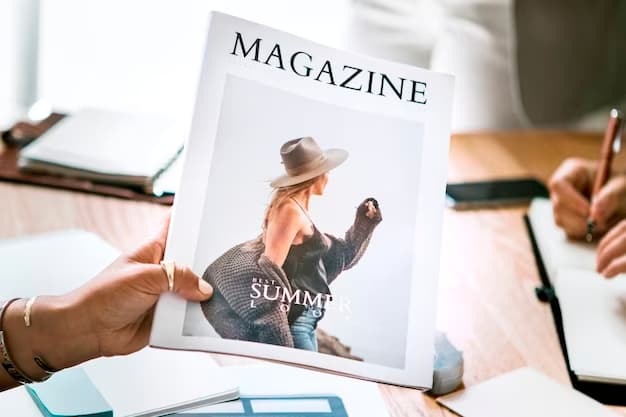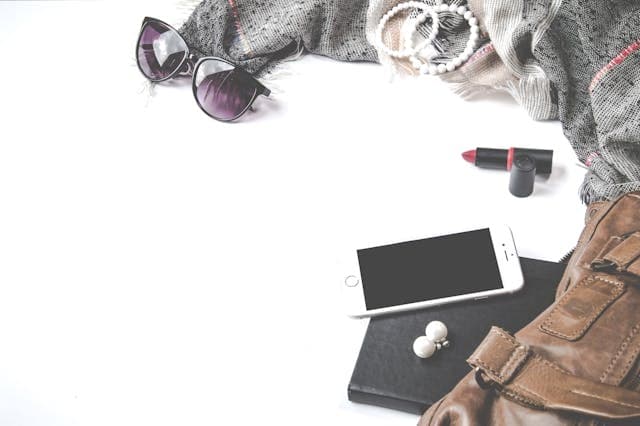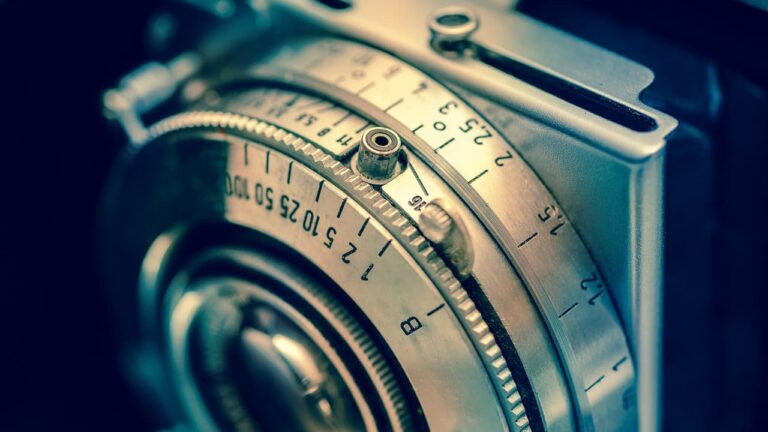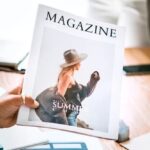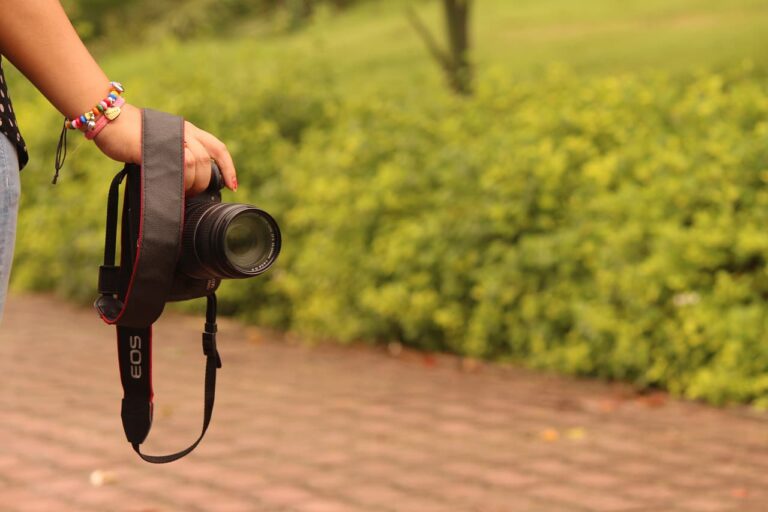Introduction
Fashion journalism encompasses more than the superficial allure and extravagance it showcases. It is a form of artistic expression, a mastery of technique, and for numerous individuals, a profound vocation. The industry is extensive, providing numerous opportunity for authors to explore specialized areas ranging from runway reporting to the complexities of the business aspect. Presented below is a comprehensive manual for embarking on and excelling in the realm of fashion journalism.
What is Fashion Journalism?
At its core, fashion journalism is about reporting and writing about the fashion industry. This encompasses a wide range of media from traditional print magazines and newspapers to modern digital outlets such as blogs and social media. It’s important to note that fashion writing often goes hand-in-hand with styling – every compelling fashion narrative is enhanced by captivating visuals.
Roles within Fashion Writing
Fashion writing encompasses a variety of roles that collectively contribute to the creation of engaging and informative content in the fashion industry. These roles are crucial for producing high-quality articles, features, and stories that captivate readers and keep them informed about the ever-evolving world of fashion. In this detailed guide, we’ll explore three key roles within fashion writing: Fashion Editor, Staff Writer, and Contributor.
Fashion Editor
Fashion Editors play a pivotal role in shaping the editorial content of fashion magazines and websites. They are often the creative minds behind the visual and stylistic aspects of fashion spreads. Here is a breakdown of their responsibilities:
- Curating and Styling Photoshoots: Fashion Editors are responsible for selecting clothing, accessories, and models for photoshoots. They work closely with photographers, makeup artists, and hairstylists to create visually stunning images that align with the magazine’s aesthetic.
- Setting Editorial Direction: Fashion Editors help establish the overall editorial direction of a publication. They decide on themes, trends, and fashion concepts to feature in upcoming issues.
- Collaborating with Writers: While not all Fashion Editors write articles themselves, they often collaborate with writers by providing guidance on the content’s visual elements. They ensure that articles are complemented by appropriate visuals, such as photos and illustrations.
- Editorial Meetings: Fashion Editors participate in editorial meetings to brainstorm ideas, discuss upcoming features, and plan the magazine’s content calendar.
- Maintaining Industry Relationships: They establish and maintain relationships with fashion designers, brands, and PR agencies to secure access to the latest collections and exclusive interviews.
Staff Writer
Staff Writers are the backbone of fashion publications, responsible for producing written content that informs, entertains, and engages readers. Here is a detailed look at their role:
- Article Creation: Staff Writers write articles, features, reviews, and interviews. They conduct research, gather information, and craft compelling narratives that resonate with the publication’s target audience.
- Interviewing Experts: They have the opportunity to interview fashion designers, industry experts, and celebrities to provide unique insights and perspectives in their articles.
- Pitching Ideas: Staff Writers pitch story ideas during editorial meetings and collaborate closely with Fashion Editors and sub-editors to develop and refine their concepts.
- Adhering to Style Guidelines: Writers must follow the publication’s style guidelines, ensuring consistency in language, tone, and formatting across all content.
- Staying Current: To remain relevant, Staff Writers stay up-to-date with the latest fashion trends, industry news, and cultural shifts.
Contributor
Contributors are freelance writers who offer their expertise and perspectives to various fashion publications. They operate independently, contributing to multiple outlets simultaneously. Here are the key aspects of their role:
- Versatility: Contributors often have diverse writing styles and interests, allowing them to offer fresh and unique perspectives on fashion topics.
- Flexibility: They have the freedom to choose the publications and topics they want to write about, making them adaptable to a wide range of fashion-related content.
- Networking: Building and maintaining a network of contacts in the fashion industry is essential for Contributors. This network helps them secure assignments and access insider information.
- Pitching Stories: Like Staff Writers, Contributors pitch story ideas to editors at various publications. They must sell their ideas and demonstrate their ability to deliver engaging content.
- Meeting Deadlines: Freelance Contributors must meet deadlines consistently, as they often work on multiple projects simultaneously for different clients.
Potential Earnings in Fashion Journalism

Fashion journalism is a dynamic and diverse field that offers a wide range of career opportunities, from full-time staff positions to freelancing. Let’s explore the potential earnings in fashion journalism, considering factors such as location, experience, and the type of work involved.
Career Paths in Fashion Journalism
Fashion journalism encompasses a wide array of career paths, each offering distinct opportunities for income generation. Understanding these paths is crucial for gauging potential earnings:
- Staff Writer/Editor: Staff positions at fashion magazines, websites, or newspapers typically provide a fixed salary, benefits, and job security. However, salaries can vary widely based on factors like the publication’s prestige and location.
- Freelance Writer: Freelance fashion journalists work on a freelance basis, allowing them to choose assignments and clients. This flexibility can lead to varying income levels, influenced by factors such as the freelancer’s experience and the volume and quality of their work.
- Blogger/Influencer: Some fashion journalists create their own platforms as bloggers or social media influencers, monetizing their content through advertising, sponsored posts, collaborations, and affiliate marketing. Earnings can range from modest to substantial, depending on the influencer’s reach and partnerships.
- Photographer or Stylist: While not primarily writers, fashion photographers and stylists often play pivotal roles in fashion journalism. They earn income through assignments, collaborations, and royalties from their work.
Earnings in Fashion Journalism
Earnings in fashion journalism are multifaceted and influenced by numerous variables. To gain a comprehensive understanding of potential income, we’ll explore these factors in more detail:
- Staff Writer/Editor: Salaries for in-house fashion journalists can fluctuate significantly depending on the city and publication’s prestige. Let’s break down potential earnings by location:
| Location | Average Annual Salary |
|---|---|
| New York | $59,000 |
| London | £40,000 |
| Milan | €46,000 |
| Paris | €47,000 |
These figures serve as approximate averages, subject to variations based on factors such as the publication’s size, reputation, and the individual’s experience and expertise.
- Freelance Writer: Freelance fashion journalists enjoy a more flexible income structure but must contend with less stability compared to staff positions. Earnings as a freelancer can vary widely due to the following factors:
| Factor | Impact on Freelance Earnings |
|---|---|
| Client Base | Established freelancers with a strong client base can command significantly higher earnings than newcomers. |
| Type of Work | Different types of assignments, such as feature articles, product reviews, or social media content, can have varying pay rates. |
| Expertise | Specialized knowledge in niche areas of fashion journalism can enable writers to command higher rates for their unique insights. |
| Effort and Time Invested | The number of assignments taken and the effort invested in each project can directly impact a freelancer’s income. |
| Location | Freelancers situated in major fashion cities may access higher-paying opportunities. |
Strategies for Maximizing Earnings
To optimize potential earnings in fashion journalism, consider implementing the following strategies:
- Build an Impressive Portfolio: Craft a comprehensive portfolio showcasing your best work to attract clients or potential employers.
- Networking: Cultivate strong relationships with industry professionals, attend fashion events, and actively network to access higher-paying opportunities.
- Niche Specialization: Develop expertise in a specific niche within the fashion industry, such as sustainable fashion, luxury brands, or streetwear. Specialization can help you stand out and command higher rates.
- Negotiation Skills: Improve your negotiation skills to secure better compensation for your work, whether you are negotiating freelance rates or salary packages for staff positions.
- Continual Self-Improvement: Stay updated on industry trends, continuously enhance your skills, and adapt to changing media platforms to remain competitive in the fashion journalism landscape.
Educational Background for Fashion Journalists
Contrary to popular belief, you don’t necessarily need a degree in fashion or journalism to excel in this industry. In fact, many successful fashion journalists come from diverse academic backgrounds, bringing a unique perspective to their work.Let’s explore the educational backgrounds that can be advantageous for aspiring fashion journalists, emphasizing the importance of passion and writing skills.
Fashion-Related Degrees
While not mandatory, pursuing a degree in a fashion-related field can provide you with a solid foundation and specialized knowledge that can be valuable in fashion journalism. Here are some fashion-related degrees to consider:
| Degree | Description |
|---|---|
| Fashion Design | Provides an understanding of garment construction and design. |
| Fashion Merchandising | Focuses on retail, marketing, and the business side of fashion. |
| Textile Science | Explores the intricacies of textiles and fabric technology. |
| Fashion Marketing | Concentrates on promoting and branding fashion products. |
Journalism and Communication Degrees
A strong foundation in journalism or communication is highly beneficial for fashion journalists. These degrees offer essential skills in research, writing, and storytelling, which are crucial in reporting on the fashion industry.
| Degree | Description |
|---|---|
| Journalism | Teaches investigative reporting, interviewing, and news writing. |
| Communication Studies | Focuses on effective communication, media analysis, and public relations. |
| English or Writing | Develops excellent writing skills, crucial for fashion journalism. |
| Broadcast Journalism | Provides training in video reporting and multimedia storytelling. |
Creative and Arts Degrees
Creativity plays a significant role in fashion journalism. Degrees in creative and arts-related fields can help you approach fashion from a unique angle, combining visual and written storytelling.
| Degree | Description |
|---|---|
| Art History | Explores the intersection of fashion and art throughout history. |
| Graphic Design | Enhances skills in visual communication and layout design. |
| Photography | Offers an understanding of visual storytelling and composition. |
| Film Studies | Provides insights into the cinematic aspects of fashion reporting. |
Business and Marketing Degrees
Understanding the business side of fashion is essential for fashion journalists, especially when covering topics related to the fashion industry’s commercial aspects.
| Degree | Description |
|---|---|
| Business Administration | Focuses on management, marketing, and finance, vital in fashion journalism. |
| Marketing | Teaches strategies for promoting and analyzing fashion products. |
| Economics | Offers insights into the economic forces shaping the fashion industry. |
Interdisciplinary Degrees
Combining knowledge from different academic areas can result in a unique perspective on fashion journalism. Interdisciplinary degrees allow you to explore multiple facets of fashion.
| Degree | Description |
|---|---|
| Cultural Studies | Examines the cultural, sociological, and anthropological aspects of fashion. |
| Gender Studies | Focuses on gender and identity in fashion, a relevant topic in today’s journalism. |
| Environmental Science | Explores sustainability issues in fashion, a growing area of interest. |
Skills and Qualities
Regardless of your academic background, certain skills and qualities are indispensable for success in fashion journalism:
- Passion for Fashion: A deep and genuine interest in fashion is the foundation of your career.
- Excellent Writing Skills: Strong writing abilities, including grammar, style, and storytelling, are essential.
- Research Skills: The ability to gather information, conduct interviews, and fact-check is crucial.
- Adaptability: The fashion industry is ever-evolving; staying up-to-date is key.
- Visual Literacy: Understanding aesthetics, trends, and design principles is valuable.
- Networking: Building relationships within the fashion world can open doors to opportunities.
Essential Skills for Fashion Writers

Fashion writing is a dynamic and competitive field that requires a combination of skills to thrive. To succeed as a fashion writer, you must develop expertise in several key areas. This guide will outline these essential skills in detail to help you become a successful and influential fashion writer.
Writing Skills
Writing is the foundation of fashion journalism. You must be able to convey your thoughts, ideas, and observations clearly and engagingly.
- Voice: Develop a unique voice that resonates with your target audience. Tailor your writing style to the publication and its readers.
- Grammar: Master proper grammar, punctuation, and sentence structure to maintain professionalism and readability.
- Proofreading: Diligently proofread your work to eliminate errors and typos that can undermine your credibility.
Industry Knowledge
A deep understanding of fashion’s history, current trends, and its cultural significance is crucial for fashion writers.
- Fashion History: Study the evolution of fashion over time, from ancient civilizations to contemporary styles.
- Trends: Stay updated on the latest fashion trends, designers, and collections by following fashion weeks and industry publications.
- Cultural Context: Understand how fashion is influenced by culture, politics, and societal shifts.
Technical Know-how
In the digital age, technical skills are indispensable for fashion writers. Proficiency in relevant software and knowledge of SEO (Search Engine Optimization) are essential.
- Content Management Systems: Familiarize yourself with platforms like WordPress, which many fashion websites use to publish articles.
- SEO: Learn the basics of SEO to optimize your articles for search engines and increase their visibility.
- Multimedia: Gain skills in incorporating images, videos, and interactive elements into your content.
Creativity
In a highly competitive market, creativity sets you apart. Your ability to offer a fresh and unique perspective on fashion is invaluable.
- Original Ideas: Generate innovative and original story ideas that captivate readers.
- Visual Storytelling: Explore creative ways to present fashion through visuals, such as mood boards, infographics, or fashion sketches.
- Trend Interpretation: Interpret fashion trends in your own way, providing fresh insights that readers won’t find elsewhere.
Research Skills
Fashion writers are essentially investigators, delving deep into subjects to offer rich, insightful articles that are well-researched and informative.
- Thorough Research: Conduct thorough research to ensure the accuracy and credibility of your content.
- Interviews: Develop skills in conducting interviews with designers, models, or experts in the fashion industry.
- Fact-checking: Verify facts, statistics, and claims to maintain journalistic integrity.
Pitching Prowess
Pitching your ideas effectively is essential for getting your articles published. Your ability to sell an idea to editors or clients can make or break your career.
- Compelling Pitches: Craft concise and compelling pitches that highlight the value and uniqueness of your story.
- Know Your Audience: Tailor your pitches to the specific publication or client you’re approaching.
- Persistence: Be prepared for rejection and keep refining your pitching skills to improve your success rate.
Landing a Job in Fashion Journalism
There are several key steps you can take to increase your chances of landing a job in fashion journalism. In this guide, we’ll provide a detailed roadmap to help you achieve your career goals in this competitive industry.
Decide on Your Path: Freelancing vs. Staff Role
Before diving into the world of fashion journalism, it’s important to consider whether you want to pursue a freelance career or aim for a staff role at a fashion publication. Each option has its pros and cons:
| Aspect | Freelancing | Staff Role |
|---|---|---|
| Independence | Greater independence and flexibility | Steady income and job security |
| Variety | Opportunity to work for multiple clients | Focused on one publication or brand |
| Networking | Requires self-promotion and networking | Access to an established professional network |
| Stability | Income can be irregular | Consistent salary and benefits |
Ultimately, the choice depends on your personal preferences and financial situation. Many fashion journalists start as freelancers and transition to staff roles as they gain experience and build their portfolio.
Find Your Niche
Fashion journalism covers a wide range of topics, so it’s crucial to identify your niche and specialize in a particular area that interests you the most. Some common niches include sustainable fashion, celebrity style, runway trends, beauty, and industry news. By focusing on a niche, you can become an expert in that area and stand out in a competitive job market.
Choose Your Platform
Fashion journalism can be pursued through various platforms, including print, digital, and multimedia. Each platform has its unique opportunities and challenges:
- Print: Traditional fashion magazines and newspapers offer the prestige of print publication, but the industry is evolving towards digital formats.
- Digital: Online publications, blogs, social media, and fashion websites provide a broader audience and quicker publication times. They also demand a constant supply of fresh content.
In today’s digital age, having skills in both print and digital journalism is highly beneficial. Familiarize yourself with various platforms to maximize your job prospects.
Build Your Portfolio
Regardless of your experience level, a strong portfolio is essential for showcasing your writing skills and expertise in fashion journalism. Here’s how to create an impressive portfolio:
- Select a variety of your best works that demonstrate your range and depth as a writer.
- Include articles, features, interviews, and any multimedia content you’ve produced.
- Highlight pieces relevant to your chosen niche.
- Ensure your portfolio is well-organized and visually appealing.
A well-curated portfolio can be a powerful tool for impressing potential employers or clients.
Create an Online Presence
In the digital age, establishing a strong online presence is essential for aspiring fashion journalists. Consider these steps to create your personal brand:
- Start a personal blog or website dedicated to fashion content. Regularly update it with your articles and insights.
- Actively engage on social media platforms like Instagram, Twitter, and LinkedIn, sharing your fashion-related thoughts and articles.
- Network with industry professionals, editors, and fellow journalists both online and in person.
- Attend fashion events, shows, and exhibitions to gain exposure and build connections.
A compelling online presence not only showcases your passion for fashion but also helps you grab the attention of potential employers or collaborators.
Conclusion
Writing for fashion magazines is an evolving journey. It requires persistence, adaptability, and above all, a genuine love for fashion. With the right tools and mindset, the glamorous world of fashion writing is yours for the taking.
FAQs
At its core, fashion journalism is the act of reporting and writing about the fashion industry. This includes coverage of fashion shows, trends, designers, and anything relevant to the fashion sphere. It spans across various media platforms such as traditional print, blogs, social media, and digital outlets.
Not always. While many people assume fashion editors primarily write for magazines, their main responsibility is often curating and overseeing the magazine’s editorial content. This includes styling photoshoots and ensuring the content aligns with the magazine’s vision. Some editors do write, but major publications usually have designated roles for styling and writing.
A staff writer is typically a full-time employee of a publication, responsible for crafting articles, conducting interviews, and generating story ideas. A contributor, on the other hand, is a freelance writer who might write for multiple publications on an article-by-article basis.
No, you don’t necessarily need a degree in fashion or journalism to break into the industry. While formal education can be beneficial, passion for fashion, writing skills, and industry knowledge are paramount. Many successful fashion journalists come from varied academic backgrounds.
